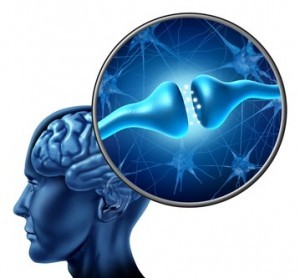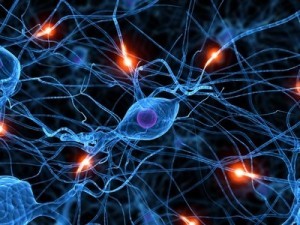Part 3 of a 4-Part Series on ADHD
(Link to Part 1 & Part 2)
What is “Executive Function,” how is it related to ADHD, and why is it important?
So far in this series, we have explored symptoms people may have with ADHD, the evaluation process, and who should conduct the evaluations. In this third article in the series on Adult ADHD, we will explore what “executive function” is, why it is important, and what can be done if it is not working as well as we would like.
The same areas of the brain that are involved in self-regulation and ADHD are involved in Executive Function, and are called the pre-frontal cortical networks, which are in the front areas of the brain. [Barkley, R. (2010). “The Nature of ADHD: The Executive Functions and Self Regulation.”]
A person with ADHD, may experience problems with executive function, which in turn can result in problems with living life effectively.
Executive Function is Involved In:
- Inhibition (holding back an impulse to act or say something) and interference control
- Self-awareness and self-monitoring
- Non-verbal working memory
- Verbal working memory
- Planning and problem solving
- Anticipation and preparation to act
- Self-regulation across time
- Emotional self-control[Barkley, R. (2010). “The Nature of ADHD: The Executive Functions and Self Regulation.”]
 Attention Deficit/Hyperactivity Disorder, or ADHD, once thought of as a disorder of childhood, which was supposed to disappear with maturation, is currently thought of as a disorder that remains through the lifespan, but changes its presentation in adulthood. As children grow into adulthood, they face increasing demands for flexibility and self-management. Adolescents are impacted more negatively by executive dysfunction than children, as life becomes more complex. Adults are impacted more negatively by executive dysfunction than adolescents, as the complexity of life continues to increase. For some, ADHD may manifest itself more clearly over time. While some struggled and perhaps even succeeded in high school, the additional demands of college or graduate school may surpass their ability. For others, problems become evident when they begin a career, or become parents, and have increased internal demands with fewer external supports (Wasserstein, Wolf, Solanto, Marks, and Simkowitz, 2008). The reason we may want to pay attention to a person’s level of executive function, is that problems with self-regulation (executive function) can limit a person’s level of independence (Wolf and Wasserstein, 2001).
Attention Deficit/Hyperactivity Disorder, or ADHD, once thought of as a disorder of childhood, which was supposed to disappear with maturation, is currently thought of as a disorder that remains through the lifespan, but changes its presentation in adulthood. As children grow into adulthood, they face increasing demands for flexibility and self-management. Adolescents are impacted more negatively by executive dysfunction than children, as life becomes more complex. Adults are impacted more negatively by executive dysfunction than adolescents, as the complexity of life continues to increase. For some, ADHD may manifest itself more clearly over time. While some struggled and perhaps even succeeded in high school, the additional demands of college or graduate school may surpass their ability. For others, problems become evident when they begin a career, or become parents, and have increased internal demands with fewer external supports (Wasserstein, Wolf, Solanto, Marks, and Simkowitz, 2008). The reason we may want to pay attention to a person’s level of executive function, is that problems with self-regulation (executive function) can limit a person’s level of independence (Wolf and Wasserstein, 2001).
As many as 30% of children diagnosed with ADHD will show the full syndrome in adulthood. An additional 30% of children diagnosed with ADHD will show a partial or mild form in adulthood (Mannuzza, Klein, Bessler et al., 1993). Conservative estimates support a 50% persistence rate into adulthood in clinical samples (Pary, Lewis, Matuschka, Rudzinsky, Safi, and Lippmann, 2002).
Of the three subtypes recognized in the Diagnostic Statistical Manual:
(1) ADHD: primarily impulsive,
(2) ADHD: primarily inattentive, or
(3) ADHD: combined type (both impulsive and inattentive),
the latter two are most commonly seen in adults. The Inattentive Type of ADHD in Adulthood looks like problems with focus and attention as well as immediate memory. The Combined Type of ADHD in Adulthood looks like restlessness and poor impulse control in both thought and behavior (Wasserstein, Wolf, Solanto, Marks, and Simkowitz, 2008).
 There is a great deal of research and scientific support for the existence of ADHD, as well as which areas of the brain are involved. Executive Function, and therefore ADHD, is managed primarily by 5 circuits in the brain. The highest levels of management of self and emotional regulation are thought to involve at least 5 frontal-subcortical circuits, or feed-back loops, which exchange information back and forth (Hale and Fiorello, 2004). These loops are distinct physiological and functional systems, and support human goal-directed behavior. All 5 circuits are related to the frontal lobe, thalamus, and basal ganglia in the brain. The five loops are again divided into the top (The Dorsal System) which involved in executive control, and the bottom (The Ventral System), which involved emotional tone and intensity (Lichter and Cummings, 2001; Hale and Fiorello,2004).
There is a great deal of research and scientific support for the existence of ADHD, as well as which areas of the brain are involved. Executive Function, and therefore ADHD, is managed primarily by 5 circuits in the brain. The highest levels of management of self and emotional regulation are thought to involve at least 5 frontal-subcortical circuits, or feed-back loops, which exchange information back and forth (Hale and Fiorello, 2004). These loops are distinct physiological and functional systems, and support human goal-directed behavior. All 5 circuits are related to the frontal lobe, thalamus, and basal ganglia in the brain. The five loops are again divided into the top (The Dorsal System) which involved in executive control, and the bottom (The Ventral System), which involved emotional tone and intensity (Lichter and Cummings, 2001; Hale and Fiorello,2004).
The Five Circuits:
- Motor circuit-involves movement (i.e.: handwriting).
- Oculo-motor circuit-involves frontal eye field, the prefrontal and parietal cortex functions (front and sides of the brain) (i.e.: reading words).
- Dorsolateral prefrontal circuit-involves the front and sides of the brain (anterior-lateral prefrontal executive functions) (i.e.: reading a math word problem and turning the words into numerical equations).
- Orbital prefrontal circuit-involves the lower middle part of the frontal lobes (inferior-medial prefrontal functions) (i.e.: waiting one’s turn during a discussion).
- Anterior cingulate circuit-involved in anterior cingulate (i.e.: finishing work on time). [Lichter and Cummings (2001); Hale and Fiorello (2004)]
People with ADHD are thought to have dysfunction in one or more of these loops, especially the dorso-lateral (inattentive type) and orbital (hyperactive-impulsive type) circuits (Hale, Bertin, and Brown, 2004).
Let’s take a look at what may happen if a particular circuit is not functioning normally:
- Motor Circuits: Problems with this circuit result in impaired motor or movement control and activity level.
- Occulomotor Circuits: Problems result in impaired visual scanning and attention, reading and writing efficiently and fluently (Lichter and Cummings,2001; Hale and Fiorello, 2004).
- Dorsolateral Prefrontal Circuit (Inattentive Type): This circuit mediates initiative, decision-making behavior, particularly during complex probability reasoning and estimation of multiple possible outcomes (Elliott, Rees, and Dolan, 1999). Problems result in classic symptoms of attentional deficits and executive function disorder, such as poor planning, problems with strategizing and organizing, impaired monitoring and evaluating, and difficulty shifting and changing behavior (Hale and Fiorello, 2001).
- Orbital Pre-frontal Circuit (Hyperactive-Impulsive Type): This circuit has subcortical connections which aid in initiating and maintaining performance, inhibits irrelevant responses or actions, and modulates emotional responses. Problems result in intense shifts in emotion, lack of inhibition, and poor impulse control (Hale and Fiorello, 2004).>
- Anterior Cingulate Circuit- This circuit includes the medial frontal cortex area, and is sometimes considered part of the limbic system. It ensures efficient interactions between the multiple posterior and prefrontal areas (Posner and Raichle, 1994). It involves response to novelty, self-monitoring of performance, inhibiting automatic responses, shifting focus between tasks, and complex decision-making (Posner, 1994). Problems result in absence of motivation, lack of persistence, and poor self-monitoring of performance (Hale and Fiorello, 2004).
Reach Out
As you can see, the mind is very complex, and if a part of the brain is impacted by a condition such as ADHD, it can have significant impact on a person’s ability to live life to the fullest potential. We are now able to pinpoint the areas of the brain that are having challenges, as well as treatment approaches for improving function. Not only does ADHD impact a person’s day to day ability to do what he or she wants and needs to do, it almost always effects the person’s relationships with family and friends, which will be addressed in the 4th article in the series on Adult ADHD.
If you or a loved one may be challenged with ADHD, there is a lot you can do about it. By completing an evaluation for ADHD with a Christian psychologist, such as Dr. Stroemel, you will be able to learn more about the way God has made you, and can learn ways of reaching the potential He created you for.
References
For a complete listing of references for the information found in the articles of this four-part series, click here.
Photos
“Human Nerve Cell Synapse Receptor,” on, Image ID: 10795339, by lightsource, Depositphotos.com; “Active Nerve Cell,” ID 2633825, by Eraxion, Depositphotos.com

